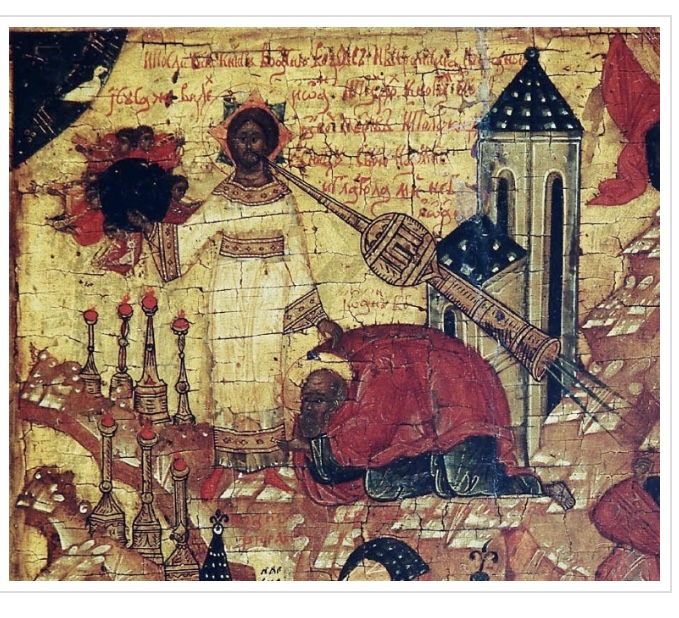
We see Jesus standing with an 8-pointed star behind his head, emblematic of “eternity,” in this iconographic depiction of the first chapter of the Apocalypse. Christ appears in gleaming white priestly vestments, shining more brightly than the sun much as he is described as appearing at the Transfiguration on Mt. Tabor. Transfiguration, in patristic sermons, is seen as an anticipation of the End and a foretaste of the Apocalypse. Transfiguration reveals the goal and intended destination of humanity in communion with God. St. John, who saw Christ transfigured on Tabor, recognizes Christ transfigured again on Patmos.
The Apostle John makes a proskynesis (“prostration “) before Christ. Christ’s voice, which is described as sounding like a trumpet blast, is depicted by the elaborate trumpet coming from his mouth. We see the seven lamps depicted as candlesticks at Christ’s side. It became customary in the Christian West to always have seven candlesticks on the altar when the bishop celebrates the Eucharist.
The proskynesis, or “prostration,” is a gesture that appears many times throughout the Old and New Testaments. The prophet Daniel makes a proskynesis (Daniel 8:17; 10:7-9) while Joshua made a proskynesis to an angel (Joshua 5:14) and when King Solomon dedicated the Temple, the priests all make a proskynesis when the glory of God fills the newly-dedicated Temple.
Proskynesis is frequently translated “worship” in English Bibles but—according to the 7th ecumenical council—technically speaking proskynesis is precisely not worship. It is an act of honor, of reverence, of veneration. But not worship. Proskynesis is an act of veneration appropriate to make towards holy things—the altar, relics, icons—but it is not worship which is appropriate to offer only to God. Worship may include an act of proskynesis but proskynesis is not limited to acts of worship.
